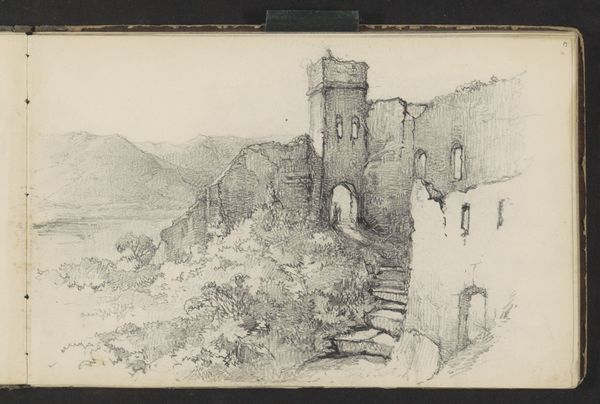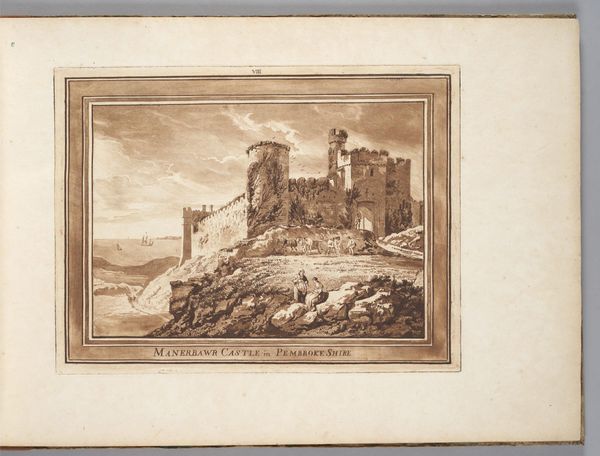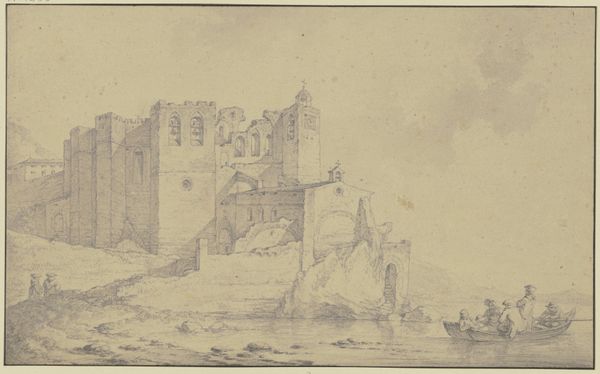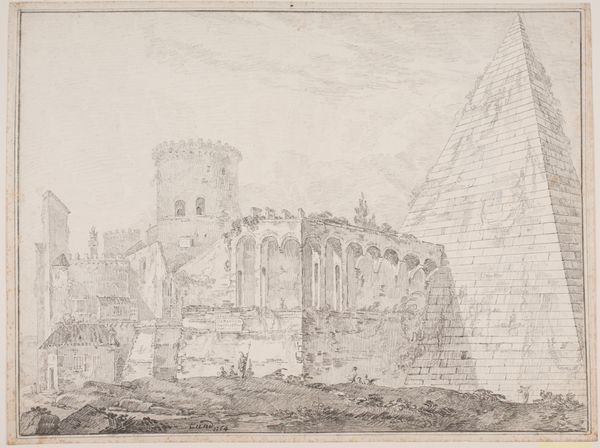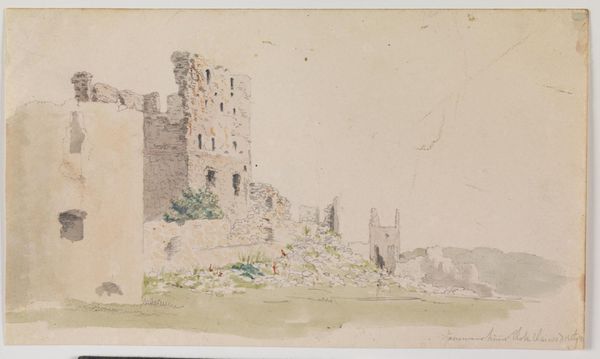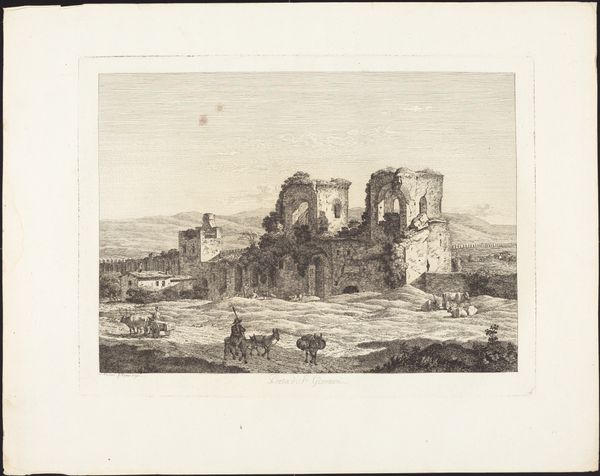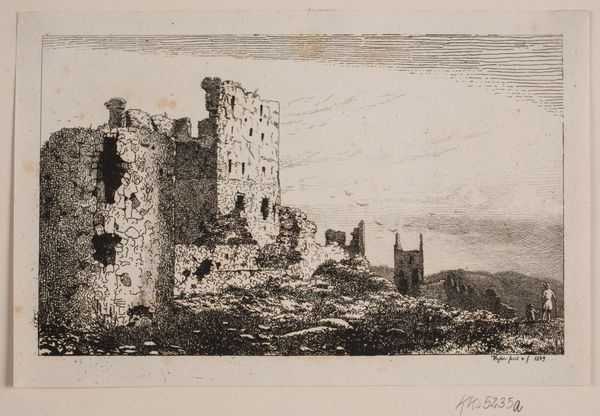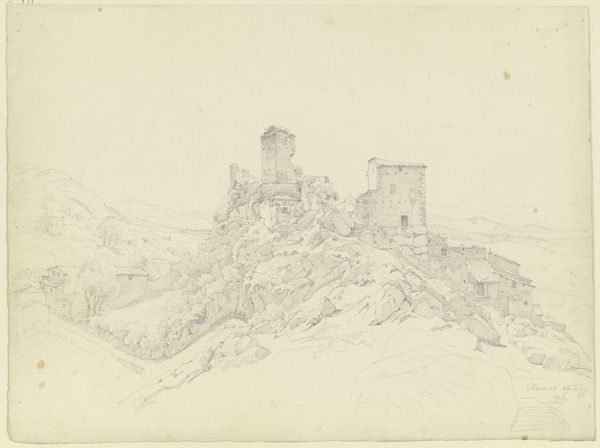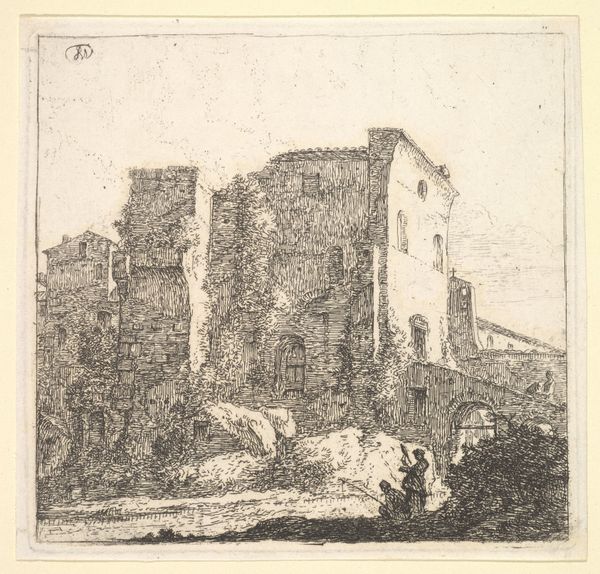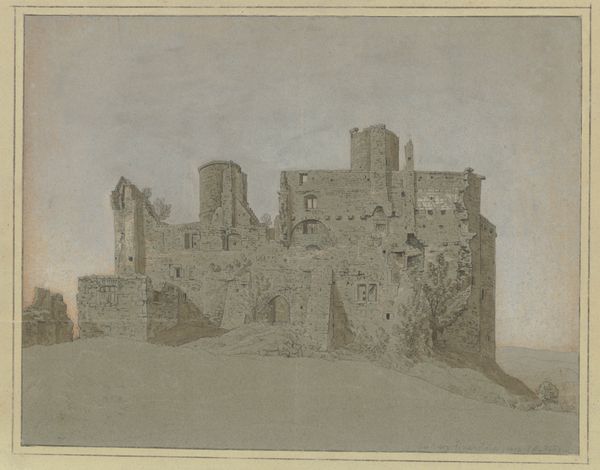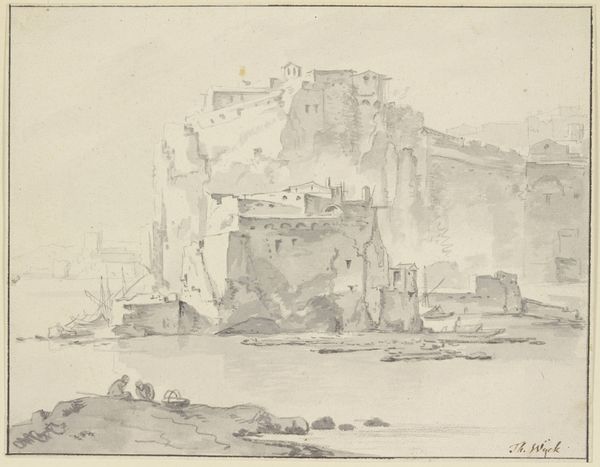
Copyright: Rijks Museum: Open Domain
Editor: So, this is *Ruïne van Burcht Hohenstein* by Maria Vos, made sometime between 1860 and 1865. It’s a pencil and colored pencil drawing. It has such a somber mood about it, all that grey and those decaying ruins... Makes you think about the passage of time, doesn’t it? What's your take on this piece? Curator: The passage of time, indeed! I am fascinated by how Vos uses these ruins, rendered with such delicate precision, to almost whisper of a romanticized past. Notice the tiny figure at the base of the wall – almost swallowed by the immensity of the stones. Makes you feel small, doesn’t it? Like history is breathing down your neck. The choice to use coloured pencils in such a subdued way – it avoids sentimentality, wouldn't you agree? It's melancholic rather than overly dramatic. What feelings does the figure evoke for you? Editor: That’s true; they definitely feel dwarfed by it all! Maybe a little lonely, too? The muted colors really reinforce that melancholic feeling… I see that it is tagged as romanticism. How does that fit in with ruins, exactly? Curator: Ah, Romanticism! Think about it as less about roses and more about *feeling*. Ruins became symbols, physical embodiments of lost glory, of the overwhelming power of nature, and the fleeting nature of human achievement. It's not about accuracy; it's about emotion. The drawing is about invoking a specific feeling, a kind of sweet sorrow… It whispers, "even mighty castles crumble." Now, look at how she suggests, rather than dictates. What stories do *you* think it tells? Editor: I hadn’t thought of it like that. It definitely hits differently now, with that context. It's a reminder that even the grandest things don't last forever. I appreciate Maria Vos using simple media to portray very complicated ideas. Curator: Exactly! That subtlety is her strength, I think. These crumbling stones serve as reminders; a gentle whisper urging reflection, and prompting us to contemplate our place within the vast tapestry of time. It has been delightful discussing this with you.
Comments
No comments
Be the first to comment and join the conversation on the ultimate creative platform.
